i do have these questions i already BOLD the answers I just
i do have these questions i already BOLD the answers. I just wanted to know if the my answer correct or not. thanks
K
kQuestion 1 (2.85 points)
Eggs that are contaminated with salmonella can cause food poisoning among consumers. A large egg producer takes an SRS of 200 eggs from all the eggs shipped in one day. The laboratory reports that 11 of these eggs had salmonella contamination. Unknown to the producer, 0.2% (two-tenths of one percent) of all eggs shipped had salmonella. In this situation,
Question 1 options:
a)
both 0.2% and 11 are statistics.
b)
11 is a parameter and 0.2% is a statistic.
c)
0.2% is a parameter and 11 is a statistic.
d)
both 0.2 % and 11 are parameters.
Save
Question 2 (2.85 points)
Suppose you interview 10 randomly selected workers and ask how many miles they commute to work. You\'ll compute the sample mean commute distance. Now imagine repeating the survey many, many times, each time recording a different sample mean commute distance. In the long run, a histogram of these sample means represents
Question 2 options:
a)
a simple random sample.
b)
the true population average commute distance.
c)
the sampling distribution of the sample mean.
d)
the bias, if any, that is present in the sampling method.
Save
Question 3 (2.85 points)
The distribution of actual weights of 8 oz wedges of cheddar cheese produced at a dairy is Normal with mean 8.1 ounces and standard deviation 0.2 ounces.
Reference: Ref 11-5
The probability that the average amount charged over these 160 procedures is more than $1180 is
Question 3 options:
a)
0.448.
b)
0.552.
c)
0.046.
d)
0.954.
Save
Question 4 (2.85 points)
In a large population of college-educated adults, the mean IQ is 112 with standard deviation 25. Suppose 300 adults from this population are randomly selected for a market research campaign.
Reference: Ref 11-4
The probability that the sample mean IQ is greater than 115 is
Question 4 options:
a)
0.452.
b)
0.528.
c)
0.019.
d)
0.981.
Save
Question 5 (2.85 points)
In a large population of college-educated adults, the mean IQ is 112 with standard deviation 25. Suppose 300 adults from this population are randomly selected for a market research campaign.
Reference: Ref 11-4
The distribution of the sample mean IQ is
Question 5 options:
a)
approximately Normal, mean 112, standard deviation 1.443.
b)
approximately Normal, mean 112, standard deviation 0.083.
c)
approximately Normal, mean equal to the observed value of the sample mean, standard deviation 25.
d)
approximately Normal, mean 112, standard deviation 25.
Save
Question 6 (2.85 points)
The central limit theorem says that when a simple sample of size n is drawn from any population with mean and standard deviation , then when n is sufficiently large
Question 6 options:
a)
the distribution of the sample mean is approximately Normal.
b)
the standard deviation of the sample mean is 2/n.
c)
the distribution of the population is approximately Normal.
d)
the distribution of the sample mean is exactly Normal.
Save
Question 7 (2.85 points)
A survey of college students finds that 20% like country music, 15% like gospel music, and 10% like both country music and gospel music.
Reference: Ref 12-2
The proportion of students that like gospel music but not country music is
Question 7 options:
a)
75%.
b)
25%.
c)
20%.
d)
5%.
Save
Question 8 (2.85 points)
A survey of college students finds that 20% like country music, 15% like gospel music, and 10% like both country music and gospel music.
Reference: Ref 12-2
The proportion of students that like neither country music nor gospel music is
Question 8 options:
a)
25%.
b)
90%.
c)
40%.
d)
75%.
Save
Question 9 (2.85 points)
A survey of college students finds that 20% like country music, 15% like gospel music, and 10% like both country music and gospel music.
Reference: Ref 12-2
The proportion of students that like either country music or gospel music is
Question 9 options:
a)
25%.
b)
55%.
c)
75%.
d)
45%.
Save
Question 10 (2.85 points)
A survey of college students finds that 20% like country music, 15% like gospel music, and 10% like both country music and gospel music.
Reference: Ref 12-2
The conditional probability that a student likes country music given that he or she likes gospel music is
Question 10 options:
a)
2/3 (approximately 66.7%).
b)
50%.
c)
90%.
d)
15%.
Save
Question 11 (2.85 points)
Suppose we toss a coin and roll a die. Let A be the event that the number of spots showing on the die is three or less and B be the event that the coin comes up heads. The events A and B are
Question 11 options:
a)
independent.
b)
conditional.
c)
reciprocals.
d)
disjoint.
Save
Question 12 (2.85 points)
Spelling mistakes in a text are either nonword errors or word errors. A nonword error produces a string of letters that is not a word, such as “the” typed as “teh.” Word errors produce the wrong word, such as “loose” typed as “lose.” Nonword errors make up 25% of all errors. A human proofreader will catch 80% of nonword errors and 50% of word errors.
Reference: Ref 12-4
What percent of errors will the proofreader catch?
Question 12 options:
a)
37.5%
b)
80%
c)
20%
d)
57.5%
Save
Question 13 (2.85 points)
A level 0.95 confidence interval is
Question 13 options:
a)
any interval with margin of error ± 0.95.
b)
an interval with margin of error ± 0.95, which is also correct 95% of the time.
c)
an interval computed from sample data by a method that has probability 0.95 of producing an interval containing the true value of the parameter of interest.
d)
an interval computed from sample data by a method guaranteeing that the probability the interval computed contains the parameter of interest is 0.95.
Save
Question 14 (2.85 points)
A medical researcher treats 400 subjects with high cholesterol with a new drug. The average decrease in cholesterol level is = 90 after two months of taking the drug. Assume that the decrease in cholesterol after two months of taking the drug follows a Normal distribution, with unknown mean and standard deviation = 30.
Reference: Ref 14-1
Which of the following would produce a confidence interval with a smaller margin of error than the 95% confidence interval you computed above?
Question 14 options:
a)
Give the drug to only 100 subjects rather than 400, since 100 people are easier to manage and control.
b)
Give the drug to 500 subjects rather than 400.
c)
Compute a 99% confidence interval rather than a 95% confidence interval. The increase in confidence indicates that we have a better interval.
d)
None of the above
Save
Question 15 (2.85 points)
The time (in number of days) until maturity of a certain variety of tomato plant is Normally distributed with mean and standard deviation = 2.4. I select a simple random sample of four plants of this variety and measure the time until maturity. The sample yields = 65.
A 95% confidence interval for , in days, is
Question 15 options:
a)
65.00 ± 3.95.
b)
65.00 ± 1.97.
c)
65.00 ± 4.70.
d)
65.00 ± 2.35.
Save
Question 16 (2.85 points)
The records of the 100 postal employees at a postal station in a large city showed that the average time these employees had worked for the postal service was = 9 years. Assume that we know that the standard deviation of the population of times U.S. Postal Service employees have spent with the postal service is approximately Normal, with standard deviation = 5 years. A 95% confidence interval for the mean time the population of U.S. Postal Service employees have spent with the postal service is
Question 16 options:
a)
9 ± 0.98.
b)
not trustworthy.
c)
9 ± 9.80.
d)
9 ± 0.82.
Save
Question 17 (2.85 points)
The upper 0.05 critical value of the standard Normal distribution is
Question 17 options:
a)
1.960.
b)
2.576.
c)
1.645.
d)
2.326.
| |||
| |||
| |||
|
Solution
All answers are correct. But I was not able to check the question number 3 becuase in that question you did not provide the full information.
Keep it up...
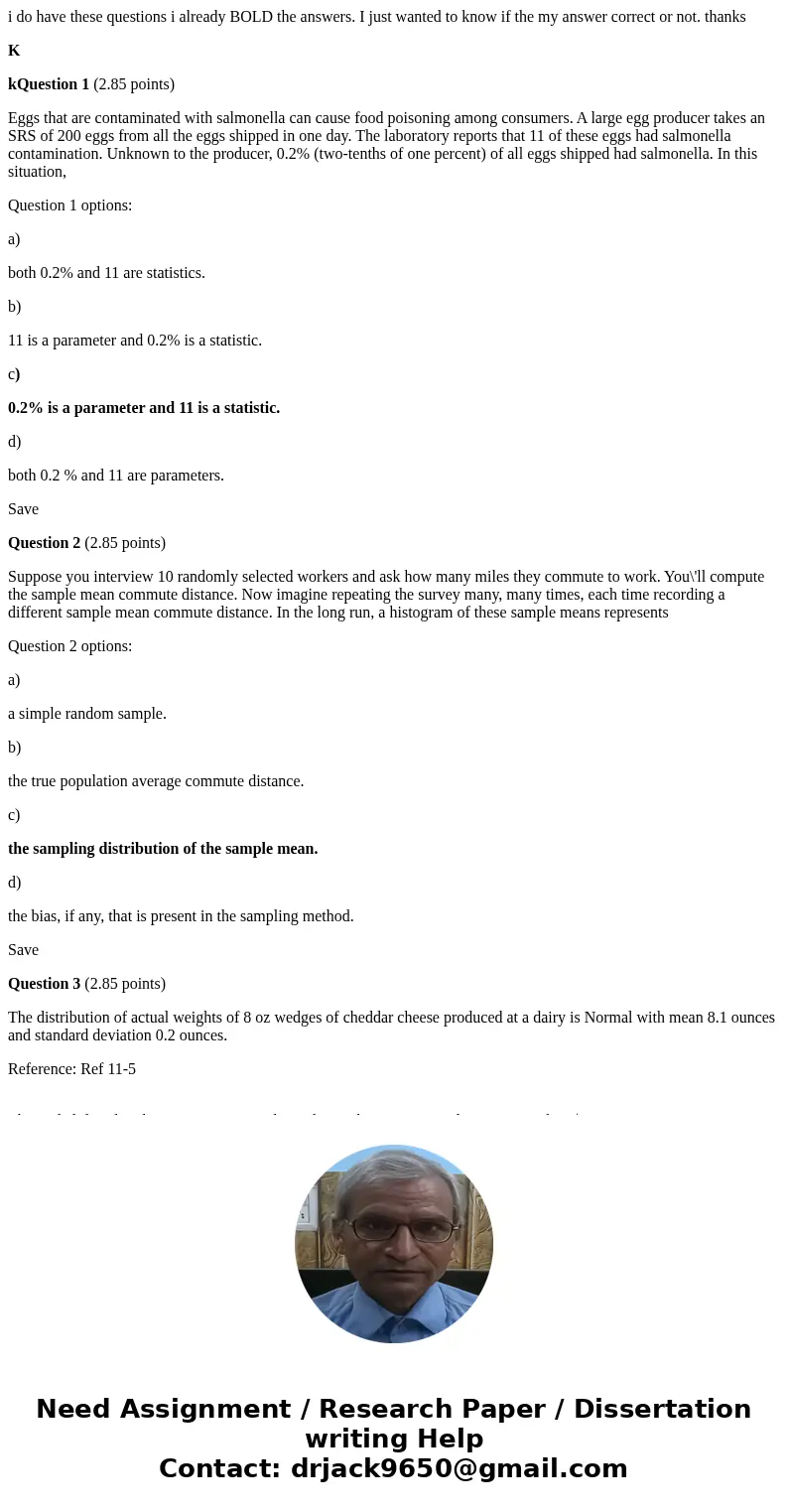
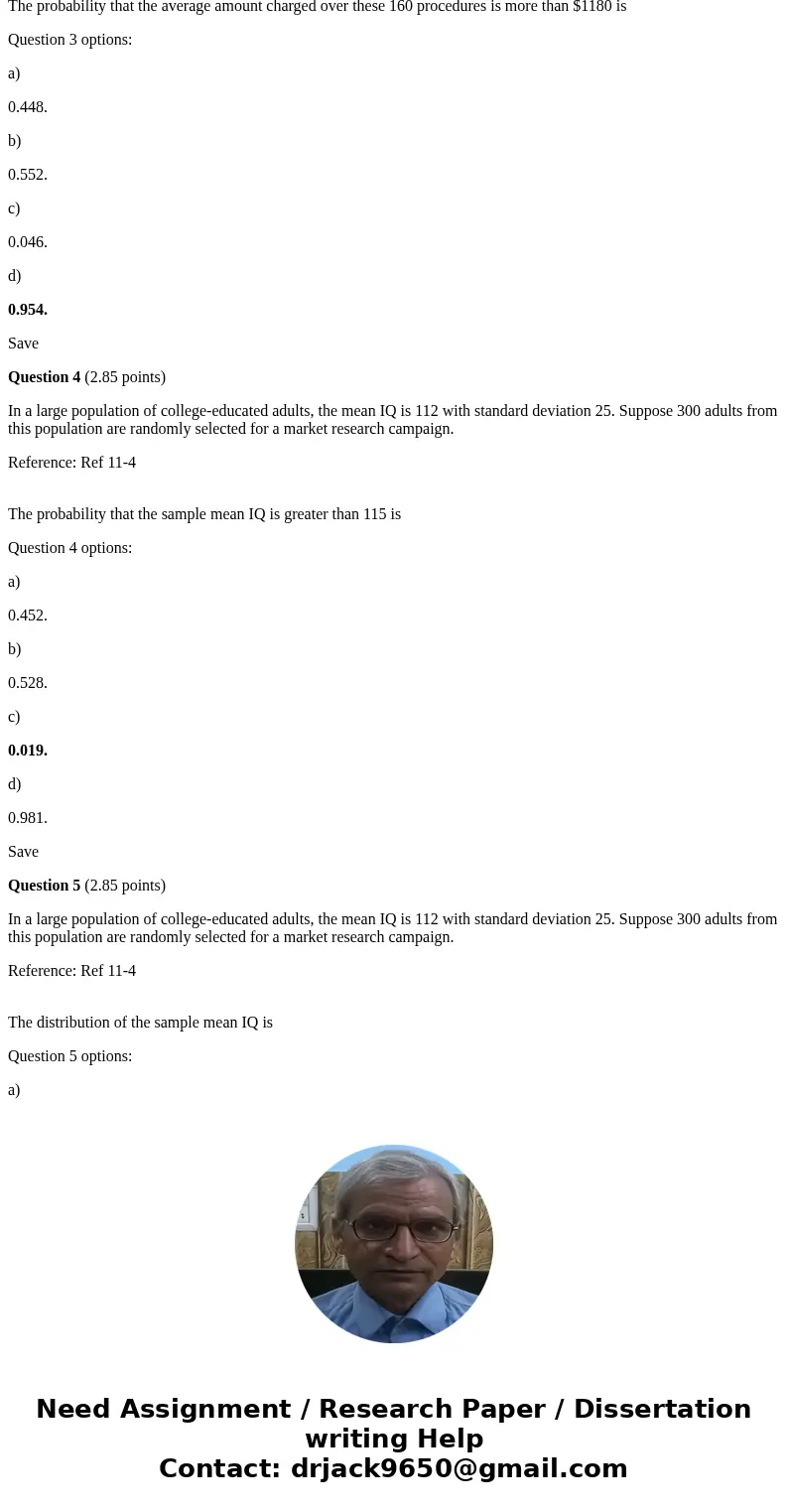
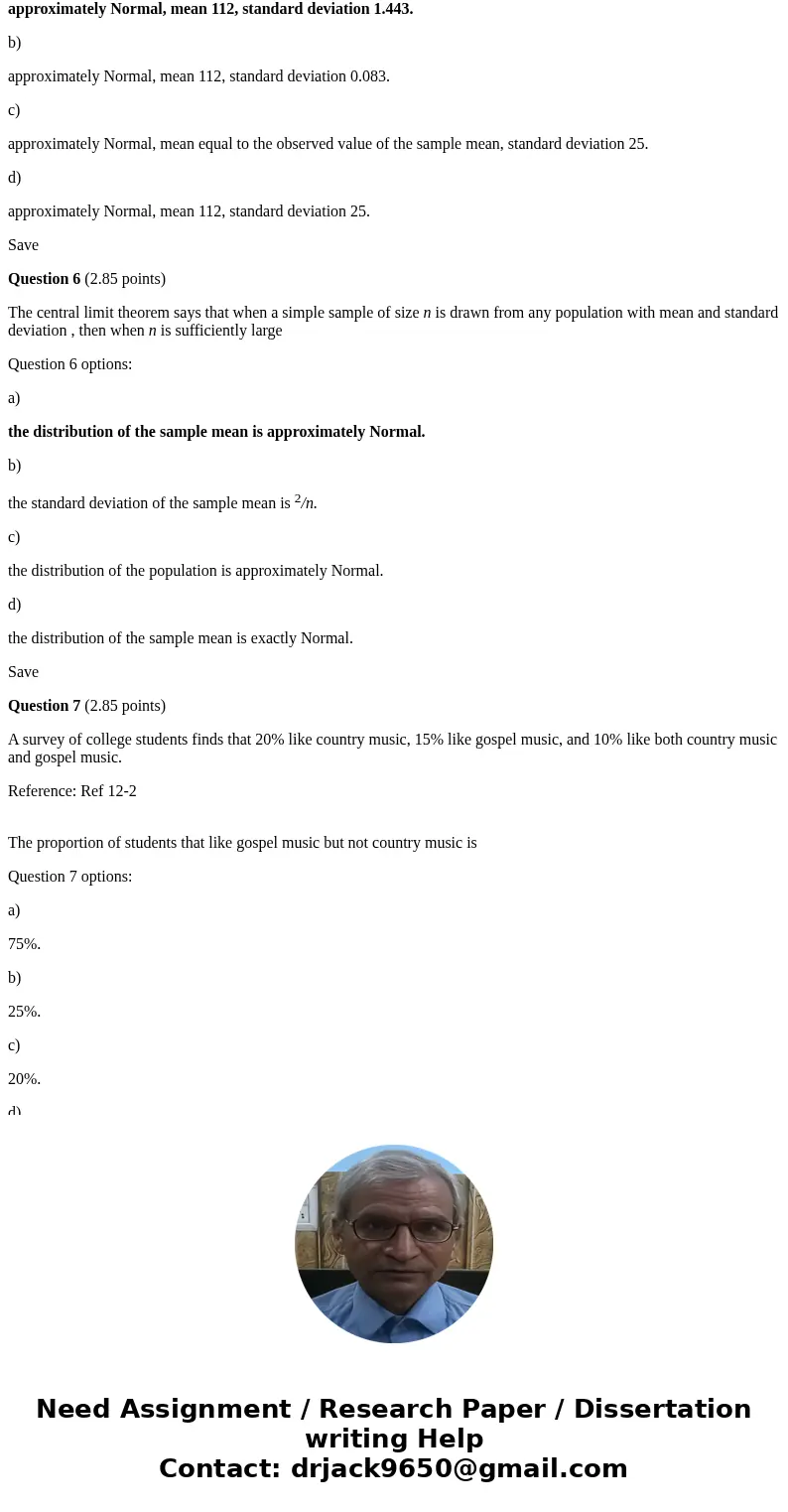
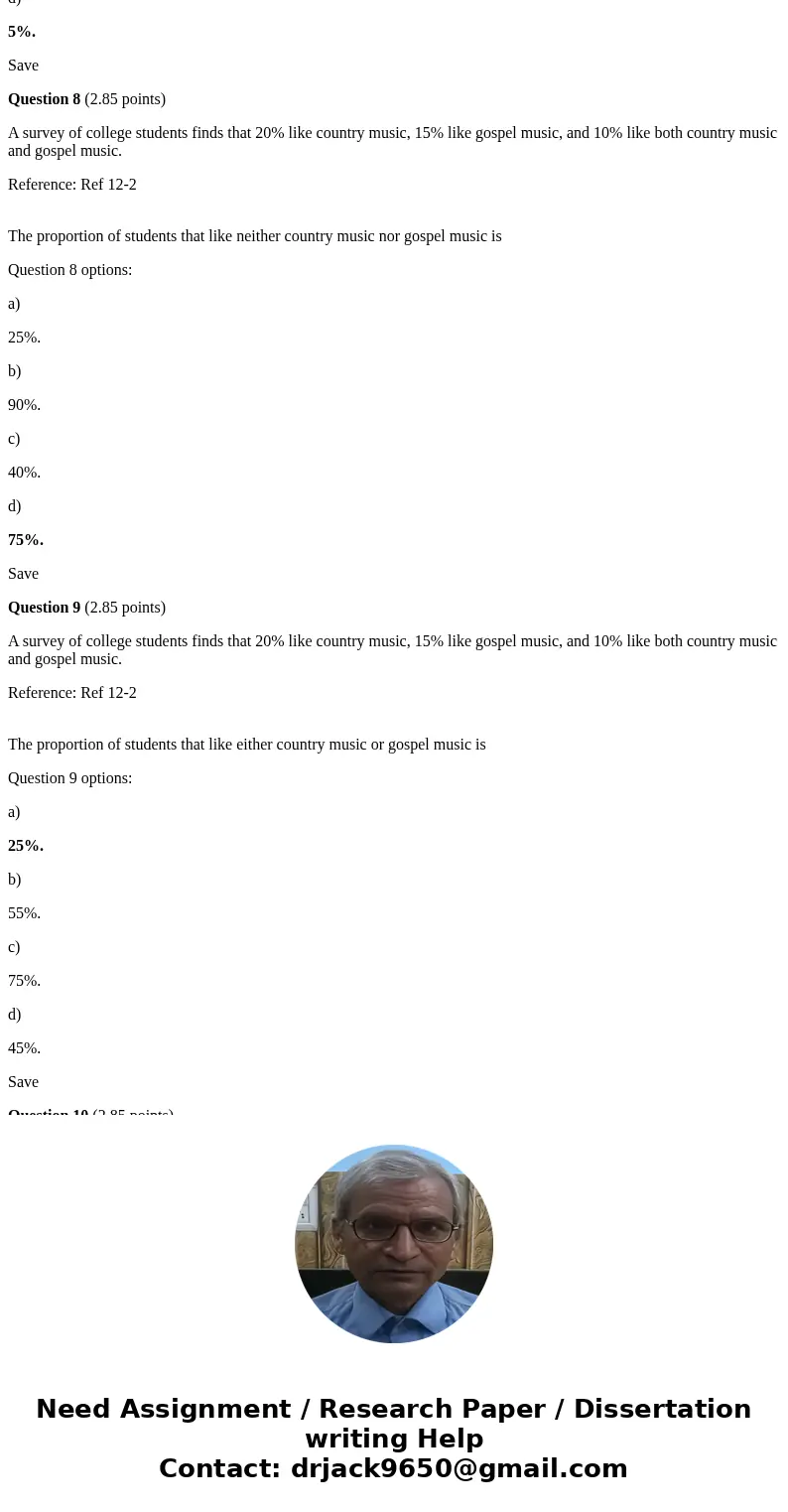
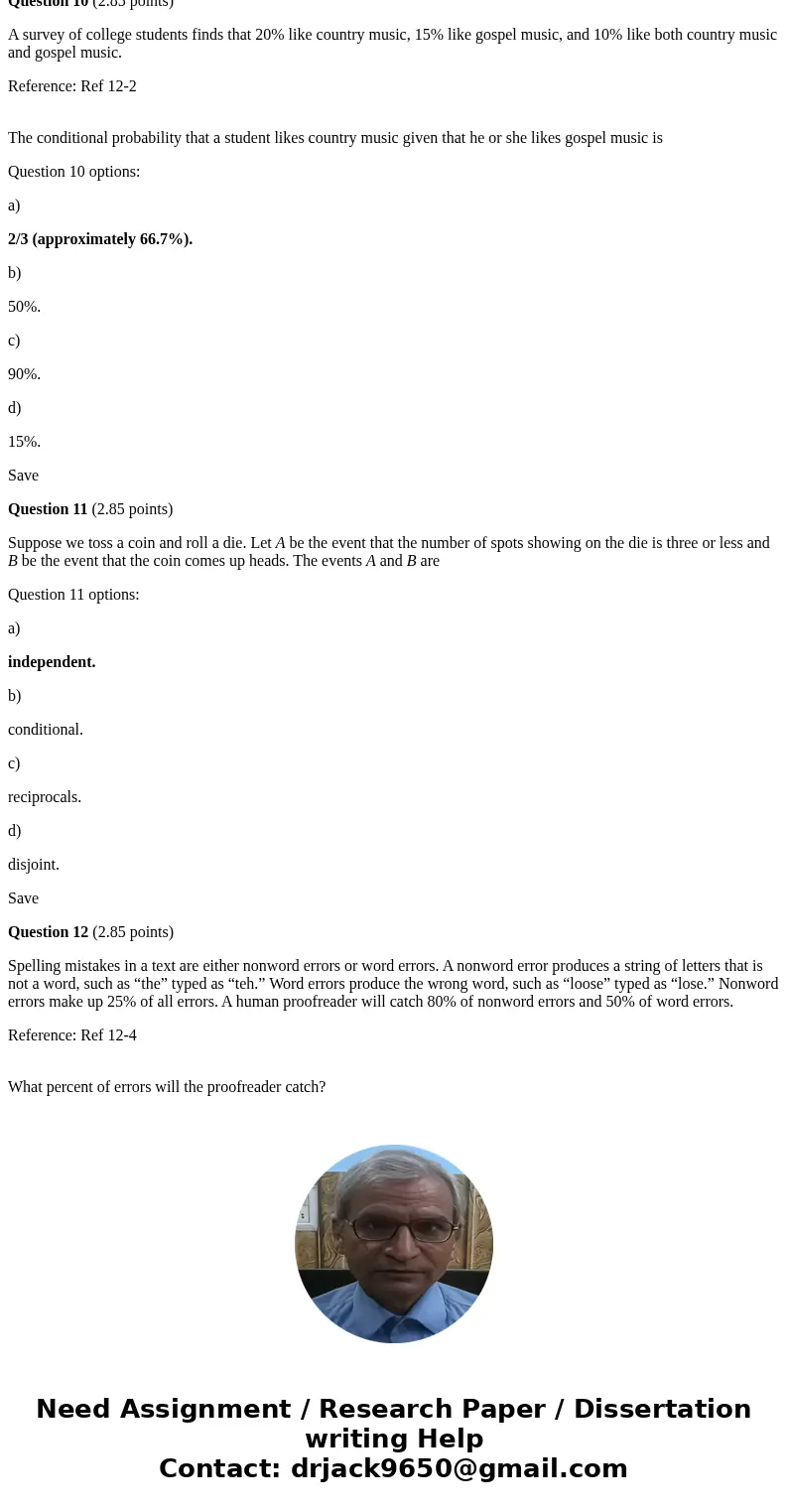
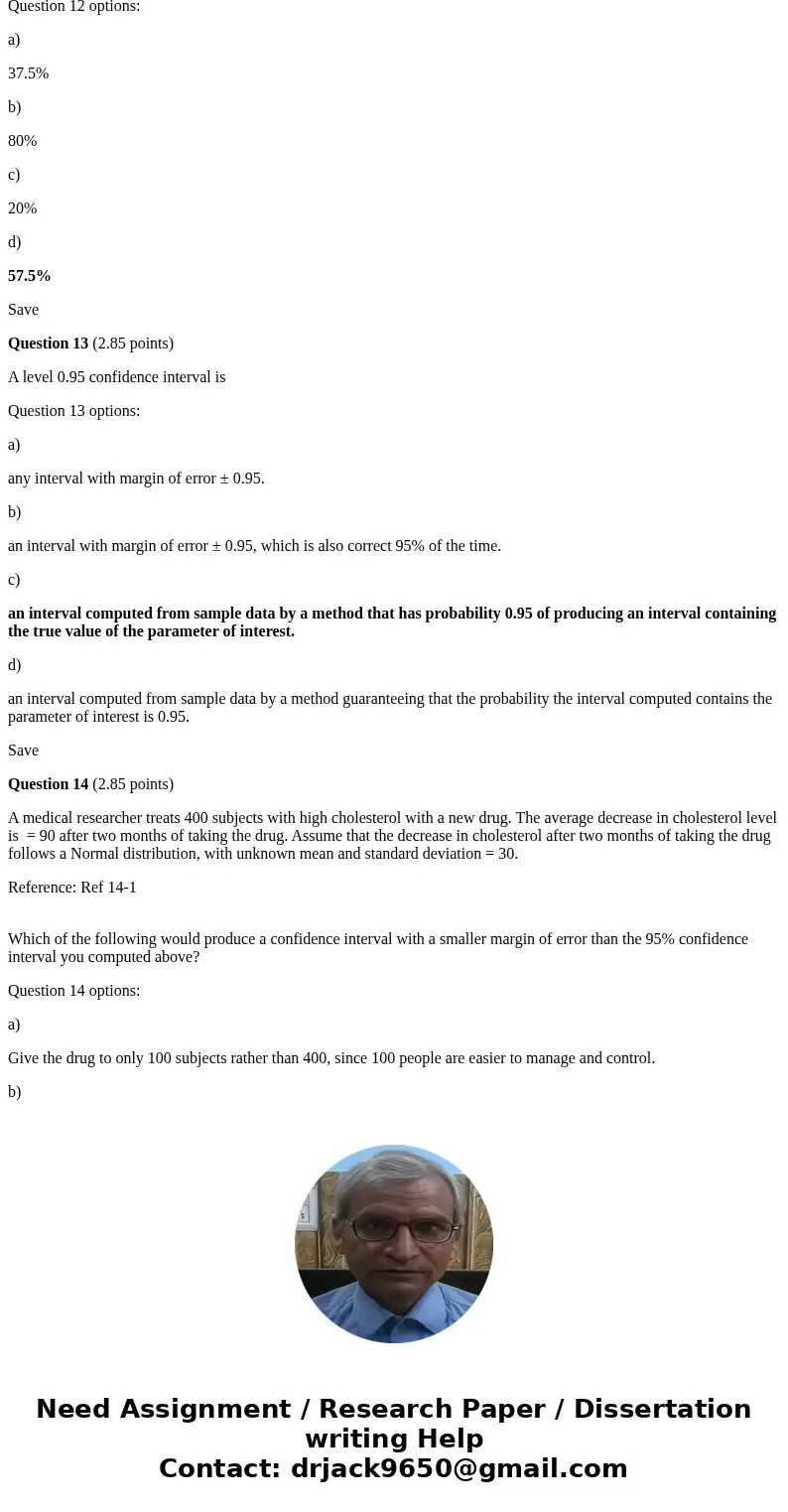
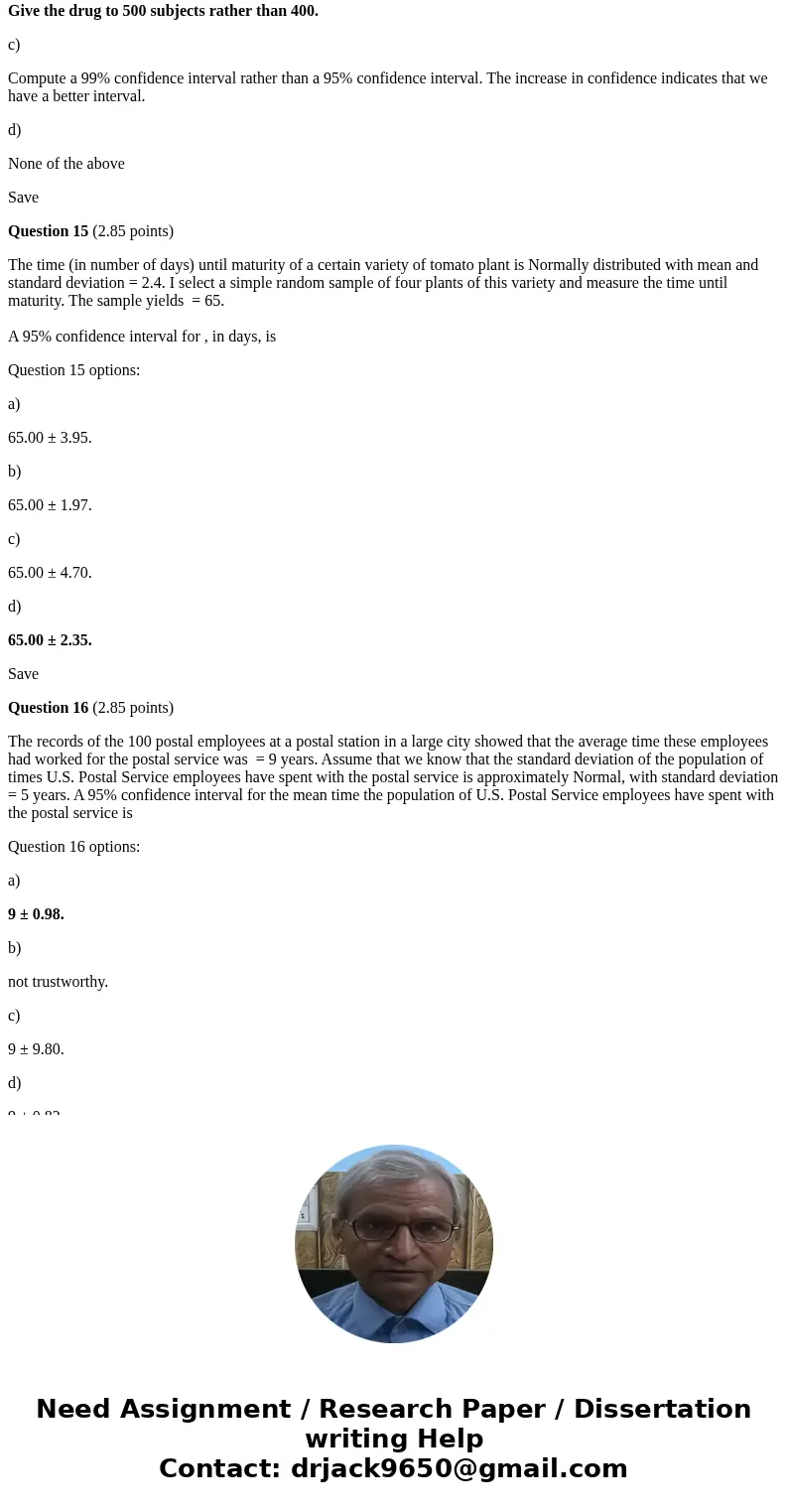
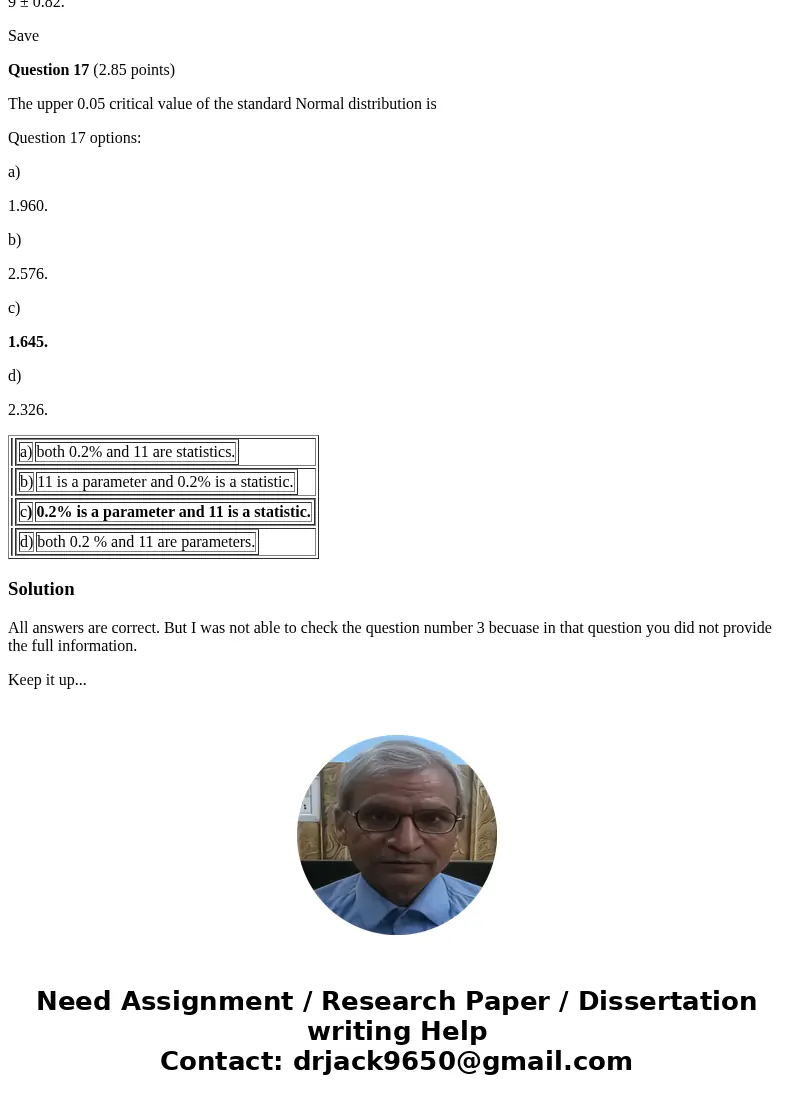
 Homework Sourse
Homework Sourse